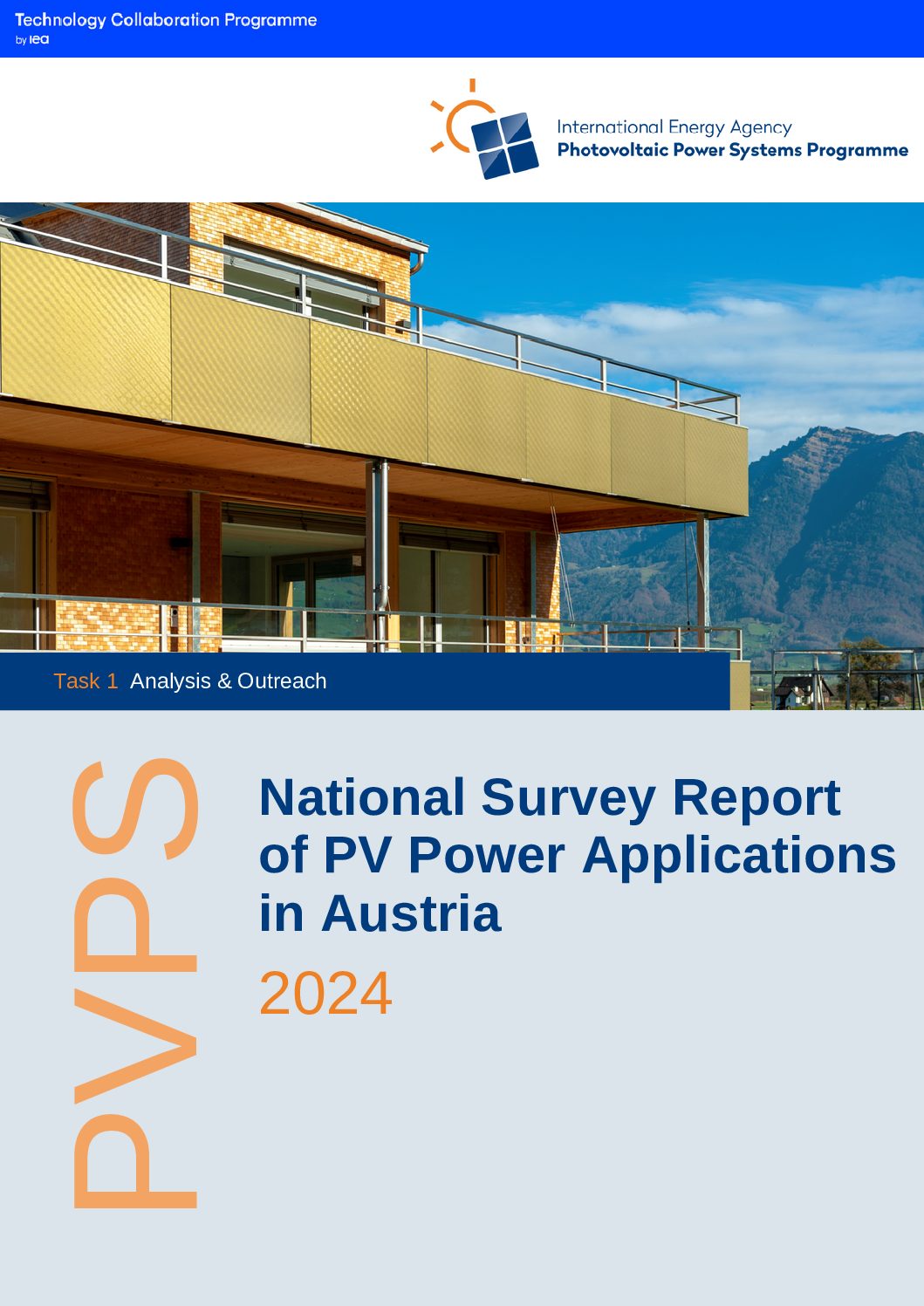October 2025
In 2024, Austria achieved another year of record photovoltaic (PV) deployment, adding 2.51 GW of new capacity and bringing cumulative installations to 9.4 GW (DC). PV generation reached approximately 7.7 TWh, meeting around 11.4% of national electricity consumption.
Key highlights of the report:
Market Development:
Austria installed 2,509 MW of new PV capacity in 2024, following 2.6 GW in 2023, marking the second consecutive year above the 2 GW threshold. Decentralised systems accounted for 2,183 MW of new capacity, while 326 MW came from centralised ground-mounted plants. Around 500,000 PV systems were operational nationwide by the end of 2024. Floating PV capacity reached 24.5 MW, and agricultural and carport systems continued to expand. Approximately one-third of new decentralised systems included battery storage, with typical capacities around 14 kWh.
Competitiveness and Costs:
Turnkey system prices averaged €1,551/kWp for residential rooftop systems, €1,000/kWp for small commercial installations, and €500–650/kWp for large utility-scale plants. Retail electricity prices for households stabilised between €0.33 and €0.36/kWh in 2024, following the volatility of the previous two years. The combination of stable system costs, self-consumption benefits, and energy price uncertainty continued to drive strong market activity.
Policy Framework:
Austria’s Renewable Energy Sources Expansion Act (EAG) remains the core mechanism supporting PV deployment, targeting an additional 11 TWh of PV generation by 2030 and climate neutrality by 2040. Key policy tools include investment subsidies for systems up to 1 MWp and storage up to 50 kWh, and market premiums for larger systems awarded through competitive tenders. Innovative applications such as building-integrated PV (BIPV), agri-PV, and floating PV receive a 30% funding bonus.
Austria’s framework for renewable energy communities (EEG) and citizen energy communities (BEG) has gained momentum, with more than 6,000 communities operational by mid-2025. These models enable collective generation and sharing of renewable electricity across properties and grid levels.
Industry and Economic Impact:
The Austrian PV sector supported approximately 12,100 full-time jobs in 2024, primarily in installation, distribution, and manufacturing. Domestic module production reached 70 MW, with manufacturers including Kioto Photovoltaics, DAS Energy, Ertex-Solartechnik, and Sunplugged. Exports represented 55% of national output, while domestic production accounted for 1.3% of the total market. The PV business generated an estimated €3.9 billion in turnover and €1.05 billion in electricity sales.
Outlook:
Austria’s PV capacity growth aligns with its national targets of 21 TWh of solar generation by 2030 and 41 TWh by 2040. Annual additions of 1.6–2 GW are expected over the coming years, supported by continued investment in local grid expansion, flexible energy management, and integration with electric mobility and heat pump technologies. Agri-PV and local energy models are expected to play an increasing role in regional energy systems.
